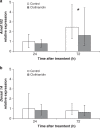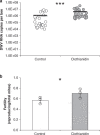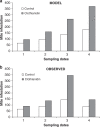Neonicotinoid Clothianidin reduces honey bee immune response and contributes to Varroa mite proliferation
- PMID: 33208729
- PMCID: PMC7675992
- DOI: 10.1038/s41467-020-19715-8
Neonicotinoid Clothianidin reduces honey bee immune response and contributes to Varroa mite proliferation
Abstract
The neonicotinoid Clothianidin has a negative impact on NF-κB signaling and on immune responses controlled by this transcription factor, which can boost the proliferation of honey bee parasites and pathogens. This effect has been well documented for the replication of deformed wing virus (DWV) induced by Clothianidin in honey bees bearing an asymptomatic infection. Here, we conduct infestation experiments of treated bees to show that the immune-suppression exerted by Clothianidin is associated with an enhanced fertility of the parasitic mite Varroa destructor, as a possible consequence of a higher feeding efficiency. A conceptual model is proposed to describe the synergistic interactions among different stress agents acting on honey bees.
Conflict of interest statement
The authors declare no competing interests.
Figures





References
-
- EASAC Policy Report 26 Ecosystem services, agriculture and neonicotinoids (The Clyvedon Press Ltd, Cardiff, United Kingdom, 2015).
Publication types
MeSH terms
Substances
LinkOut - more resources
Full Text Sources

